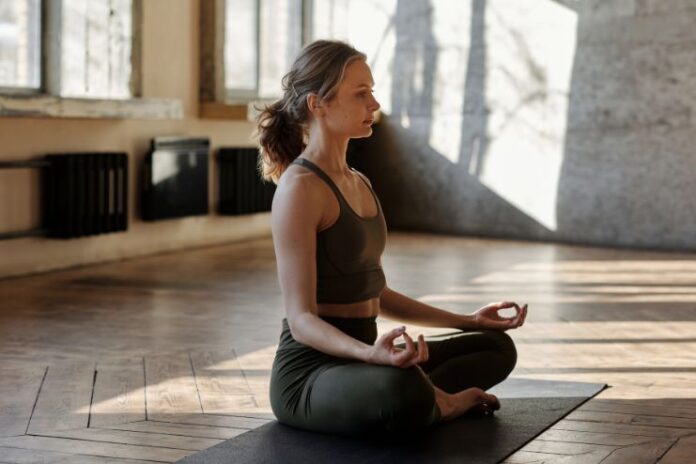Affiliate Disclaimer
Some links in this article are affiliate links. We may earn a small commission if you make a purchase through these links, at no extra cost to you. We only recommend products we find useful to our readersYoga is more than just a physical workout; it’s a science of mindfulness that connects the body and mind. Regular practice helps reduce stress, increase oxygen flow to the brain, and promote neural connections that enhance cognitive function.
What if a few basic yoga poses could sharpen your mind and strengthen your willpower? Incorporating specific poses and breathing techniques can activate brain areas responsible for memory retention, decision-making, and self-discipline. Imagine having better focus, improved memory, and enhanced mental clarity—all from the power of movement and breath.
This article will review ten potent yoga poses to increase mental activity, sharpen focus, and fortify resolve. These positions can help you unlock your mind’s full potential, whether you are a professional, student or just trying to improve your mental agility. Let’s begin!
Read More: Why Athletes Swear by Yoga Nidra for Faster Recovery
Disclaimer: Before beginning any new yoga practice, especially if you are new to yoga or have any medical issues, please speak with a licensed yoga instructor or healthcare provider. Safety and correct technique are guaranteed when practicing under the supervision of a qualified instructor.
Yoga Poses for Brain Power
As mentioned before, yoga is beneficial for one’s overall mental and physical well-being.
There are varying types of yoga to increase brain power that you can do to get the best results. Some of them include:
1. Bakasana
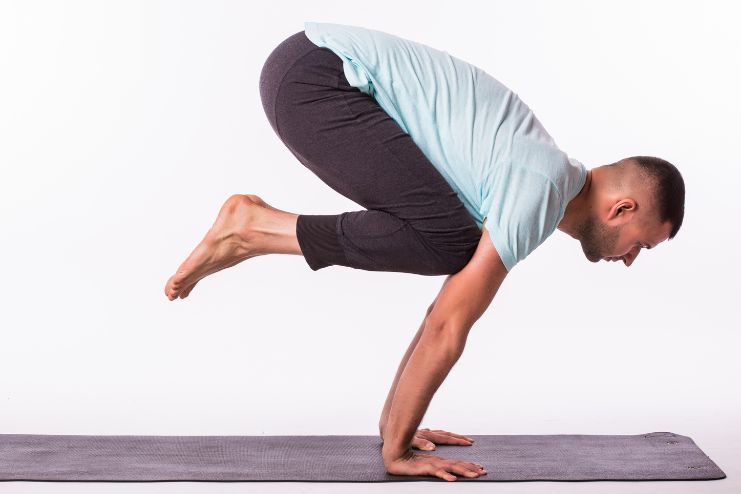
Squat on the floor with your feet hip-width apart. With your fingers split out and pointed forward, rest your hands flat on the ground before you as you lean forward. Raise your toes and your pelvis. Place your knees just below your armpits and bend your elbows slightly.
Find balance by shifting your body weight onto your arms, then slowly raising both feet off the ground. As much as you can, try to straighten your arms and bring your feet together.
Benefits: Bakasana practice improves balance and coordination, increases mental clarity, strengthens the arms, wrists, and core muscles, increases self-confidence and resolve, and lowers stress. It also strengthens the mind-body link by developing resilience and willpower.
2. Ustrasana
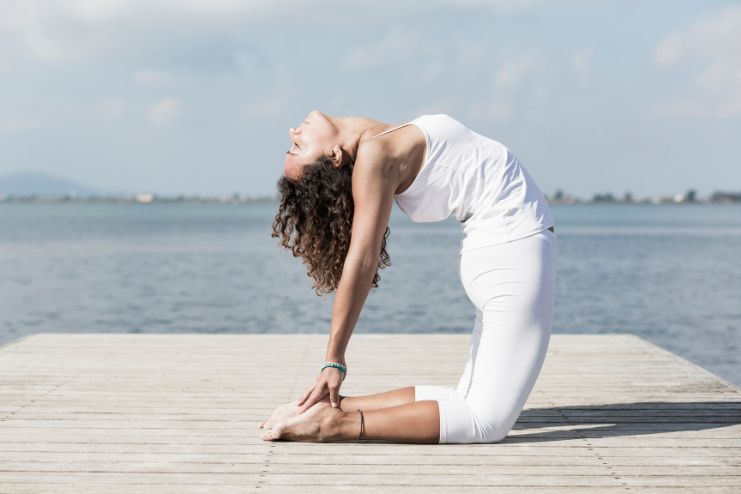
With your soles up and your legs touching, kneel on the ground. Ensure your shoulders and knees are straight while placing your hands on your hips. Slowly lift one hand at a time, reach up, and circle them to touch your heel. Holding your feet with your hands for balance, take a deep breath, and try to bend your back even further. After holding this position for a minute or as long as you can, slowly raise yourself back up while letting your hands and legs relax.
Benefits: In addition to improving flexibility, the camel stance’s backbend activates the brain’s pituitary gland. It also allows prana to circulate freely throughout the body, enhancing brain processes and easing respiratory issues.
Read More: What Is Somatic Yoga? A Beginner’s Guide to This Gentle Movement Practice
3. Bhramari Pranayama

This yoga stance uses relaxing breathing to lower stress and anxiety while enhancing cognitive performance. Choose a comfortable sitting position. Shut your eyes and inhale deeply.
Place your index finger on your forehead, your middle finger on your eyes, ring finger by the nose, and little finger on your chin, and use your thumbs to seal your ears as you release the breath softly. Make a bee-like humming sound as you exhale after taking a deep breath through your nose. Do this several times while paying attention to the calming vibration in your brain.
Benefits: It lessens tension and anxiety, soothes the mind, improves memory and focus, boosts cognitive function, encourages emotional equilibrium, lowers blood pressure, and facilitates better sleep. In addition to stimulating the brain, the calming vibrations promote relaxation and mental clarity.
4. Paschimottanasana
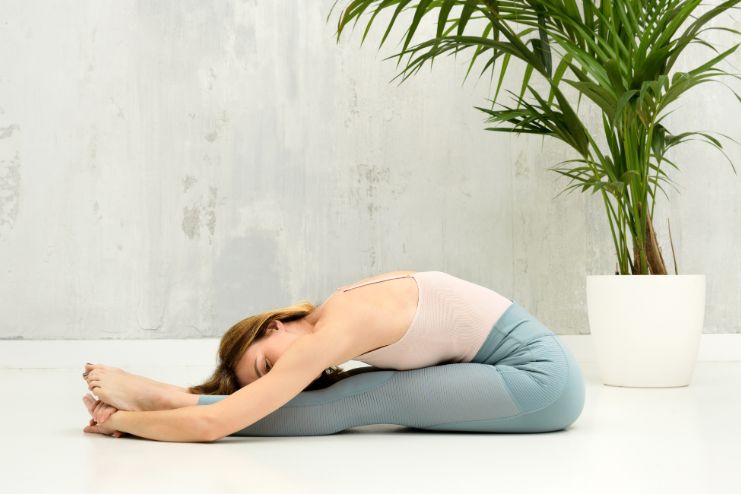
Stretch your legs forward to start in Paschimottanasana, the Seated Forward Bend Pose. Raise your arms keeping your back straight. After exhaling, lean forward with your arms parallel to your legs. For 30 seconds, try using your fingers to hold your big toes together.
Benefits: The seated forward bend stance is one of the best yoga poses for increasing focus, reducing worry, and relieving physical and mental fatigue. This pose energizes the entire body and strengthens the hip and shoulder muscles.
Read More: Chair Yoga for Seniors: Simple Moves to Improve Strength and Flexibility
5. Phalakasana
Place your chest and your stomach flat on the floor or yoga mat, touching the floor. Keep
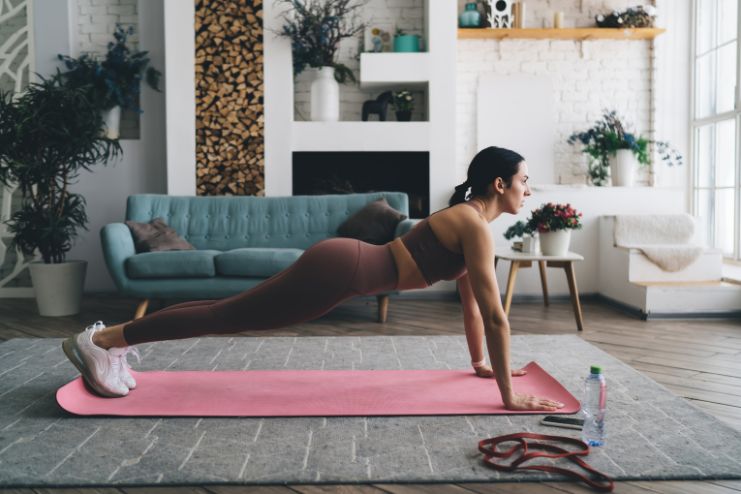
both hands interlocked and palms down on either side of the face, between the brow and the ears. Keep the tips of your toes on the ground, and simultaneously raise both feet.
Using the momentum of both hands and your entire weight, take a deep breath and slowly raise your upper body—including your torso, hips, and thighs—to a comfortable height off the ground. Keep your feet and back parallel to the floor as in a plank workout. Try maintaining this position for 30 to 60 seconds while taking deep breaths.
Benefits: In addition to strengthening your core, the plank pose activates the frontal lobes of your brain, which are involved in making decisions and solving problems.
6. Padmasana

The meditative stance of padmasana promotes good posture and deliberate breathing, which facilitates mental clarity and calmness. Stretch your legs out and sit on floor. Put your foot on your left thigh and bend your right knee.
Likewise, put your foot on your right leg and bend your left knee. Maintaining a straight spine with your hands on your knees and your palms facing up. Take deep breaths to find a contemplative state.
Benefits: Padmasana lowers stress, encourages inner peace, and improves mental clarity. It promotes attentive breathing, enhances posture, and maintains spinal alignment. Frequent practice develops emotional stability, deepens meditation, and sharpens focus, all contributing to a calm and balanced mind.
Read More: Finding Balance: Yoga and Meditation for Seniors’ Physical and Mental Health
7. Adho Mukha Svanasana

Go on your hands and knees, with your hands and your shoulder-width apart and your knees hip-width apart. Straighten your knees and elbows while gradually raising your hips off the ground. Your body should form ‘V’ shape.
Stretch your neck until your ears touch your inner arms and your eyes are focused on your navel. Press your palms into the floor to maintain your balance. Before returning to the starting posture, hold this pose for five to eight breaths.
Benefits: This traditional yoga stance boosts your brain by stretching your entire body and bringing in new, oxygenated blood. It also aids in mental relaxation, stress reduction, and concentration enhancement. Mental clarity, woohoo!
8. Halasana
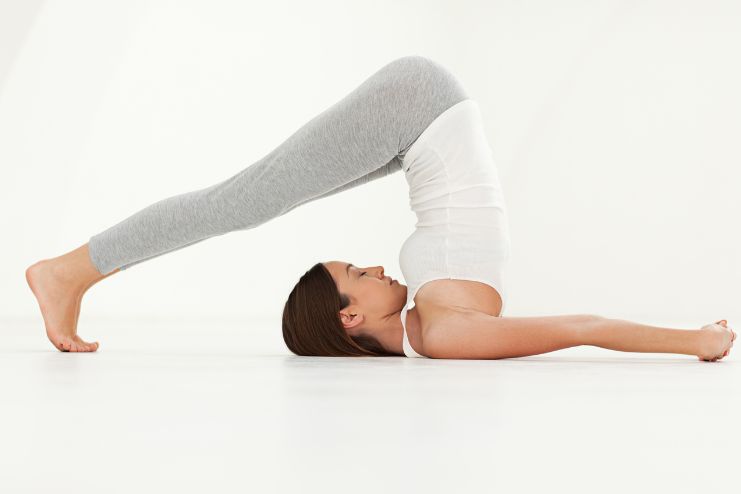
Halasana stimulates the brain by boosting blood flow to the skull. Additionally, by stretching the shoulders and spine, this position relieves tension and encourages relaxation, which is critical for cognitive function. Raise your legs above your head while lying on your back, then touch the floor behind you. With your legs straight, use your hands to support your lower back.
Benefits: By boosting blood flow to the head, halasana improves brain function, and fosters focus and mental clarity. It eases stress, promotes deep relaxation, and eases tension in the shoulders and spine. Frequent practice improves memory, promotes emotional equilibrium, and maintains cognitive wellness.
Read More: 8 Surprising Benefits of Laughter Yoga: How Humor Can Enhance Health and Wellbeing
9. Vrikshasana
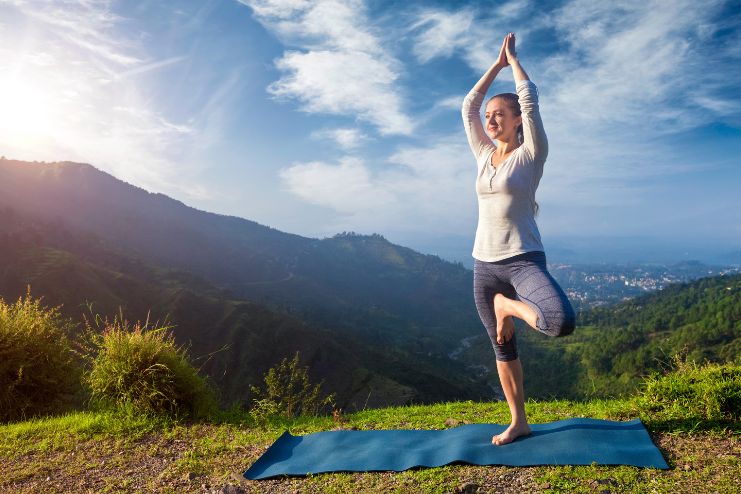
Stand erect on the floor. In prayer, raise both arms to your chest and clasp your palms together. Keep your hands together, and extend both arms upward. Place the sole of your left foot against the inner of your right leg while slowly bending your left knee. For as long as you can, keep your right leg straight. After a minute of relaxation, repeat with the right foot. Repeat five times.
Benefits: This pose activates the cerebellum, which is in charge of coordination and demands focus and concentration. By fortifying your mind-body connection while standing tall like a tree, you improve memory and stability.
10. Sarvangasana
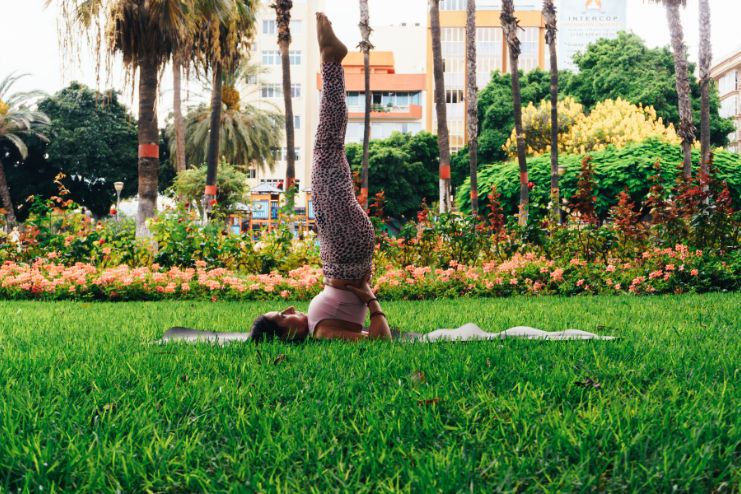
Rest on your back. Place your arms next to your body. With your feet pointing up, slowly raise your legs off the ground until they are perpendicular. Raise your back and pelvis slowly off the ground. With your palms supporting you on your back, raise your forearms off the ground. Try to maintain straight line from your shoulders to your body, pelvis, legs, and feet. Keep your eyes on your feet.
Benefits: It promotes relaxation, increases metabolism, stimulates the thyroid gland, eases tension and anxiety, increases blood flow to the brain, enhances memory and focus, and helps mental clarity in general. Frequent practice can also lessen depressive symptoms and strengthen willpower.
Read More: Sunday Stretch: Relaxing Recovery Yoga
Disclaimer: Before beginning any new yoga practice, especially if you are new to yoga or have any medical issues, please speak with a licensed yoga instructor or healthcare provider. Safety and correct technique are guaranteed when practicing under the supervision of a qualified instructor.
Conclusion
Yoga is a potent, all-natural method for improving brain clarity, strengthening willpower, and improving memory. Regular practice will help you become more emotionally resilient, focus better, and feel less stressed. Intentional activity and focused breathing nurture your brain and promote long-term cognitive health.
Why wait? Feel the mind and body changes from committing to a daily yoga practice. Remember that each stance helps you become a more composed, focused version of yourself.
We’d love to hear about your yoga journey! Share your experiences and your favorite poses in the comments below.
-
Sep 2019Written by Somapika D
-
Apr 2025Edited by Ankita















